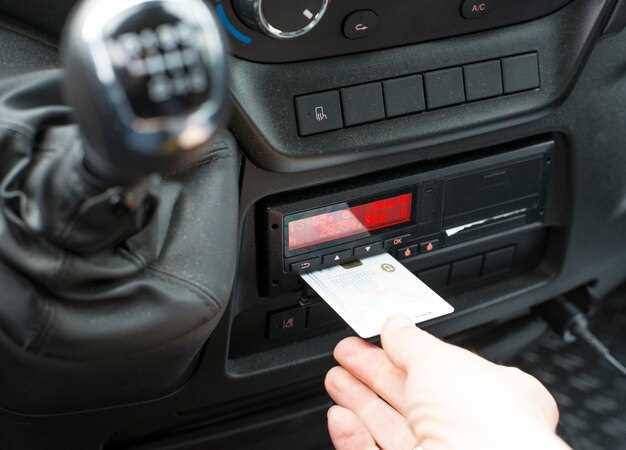
In the realm of automotive diagnostics, understanding fault codes is crucial for effective troubleshooting. The ECU, or Engine Control Unit, serves as the brain of the vehicle, constantly monitoring various parameters and performance metrics. When the ECU detects an anomaly, it generates fault codes that can pinpoint specific issues, allowing for timely and precise repairs.
The Corrado, a classic model by Volkswagen, requires special attention when it comes to reading these diagnostic codes. Utilizing the On-Board Diagnostics (OBD) system, enthusiasts and technicians can retrieve fault codes with relative ease. By simplifying the process, car owners can save time and money while ensuring their vehicles remain in optimal condition.
This article delves into the methods of reading Corrado fault codes through OBD, shedding light on the importance of understanding these codes in maintaining vehicle performance. Whether you’re a seasoned mechanic or a novice car owner, mastering the retrieval and interpretation of fault codes is a valuable skill that enhances your automotive knowledge.
Understanding OBD-II Protocols for Corrado

The OBD-II (On-Board Diagnostics II) system is an essential component in modern vehicles, including the Volkswagen Corrado. This protocol provides a standardized method for diagnosing vehicle issues, enabling mechanics and technicians to communicate with the car’s computer systems efficiently.
Utilizing OBD-II protocols, a diagnostic tool can retrieve information from the engine control unit (ECU) and other modules. Here are the key aspects of OBD-II relevant to the Corrado:
- Diagnostic Trouble Codes (DTCs): When an issue arises, the ECU generates a specific code that identifies the problem. These codes are crucial for troubleshooting and maintenance.
- Live Data Streaming: OBD-II allows monitoring of various real-time data parameters, such as engine RPM, vehicle speed, and sensor readings. This information assists in understanding the vehicle’s performance during diagnostics.
- Monitors and Readiness Status: The system performs various self-tests to determine if vital components are functioning correctly. The readiness status indicates which systems have been tested and whether they are ready for inspection.
To effectively use the OBD-II protocol with a Corrado, the following steps should be followed:
- Connect the Diagnostic Tool: Locate the OBD-II port, typically found under the dashboard near the driver’s seat, and connect your diagnostic tool.
- Initiate a Scan: Use the tool to scan for DTCs and retrieve any relevant data from the ECU.
- Interpret the Results: Analyze the retrieved codes and live data. This will guide you in identifying and resolving any issues affecting your Corrado.
Understanding these protocols not only aids in maintaining the Corrado but also enhances overall vehicle reliability. Making use of an appropriate diagnostic tool can significantly simplify the process of reading and interpreting OBD-II data.
Choosing the Right Diagnostic Tool for VW Corrado
When it comes to diagnosing issues in your VW Corrado, selecting the appropriate diagnostic tool is crucial for accurate fault detection and resolution. With various options available on the market, understanding the key features and benefits of each type will help streamline the diagnostic process.
One of the main factors to consider is the compatibility of the tool with the VW Corrado’s OBD (On-Board Diagnostics) system. Older models like the Corrado typically utilize OBD-I, while later vehicles may have transitioned to OBD-II. Make sure to choose a tool that can read the specific protocols of your vehicle.
Below is a comparison table of different types of diagnostic tools suitable for the VW Corrado:
| Diagnostic Tool Type | Compatibility | Features | Price Range |
|---|---|---|---|
| Basic Code Reader | OBD-I & OBD-II | Reads & clears codes, basic live data | $20 – $50 |
| Enhanced Scanner | OBD-II | Manufacturer-specific codes, detailed live data | $100 – $300 |
| Professional Diagnostic Tool | OBD-I & OBD-II | Comprehensive diagnostics, coding & programming functions | $400 – $1,000+ |
When choosing a diagnostic tool, consider the depth of diagnostics you need. A basic code reader suffices for simple check engine light issues, while an enhanced scanner provides more insights into specific systems. For professional mechanics or serious enthusiasts, a professional diagnostic tool offers advanced features necessary for complex repairs.
Ultimately, the right diagnostic tool will depend on your budget, expertise, and how often you plan to use it. Investing in a quality diagnostic tool tailored for your VW Corrado will not only save time but also enhance your ability to maintain and repair your vehicle effectively.
Connecting Your ECU to the Diagnostic Tool
To effectively read Corrado fault codes, establishing a proper connection between your vehicle’s ECU (Electronic Control Unit) and a diagnostic tool is essential. This process allows for efficient communication, enabling you to retrieve valuable information about your car’s performance and any existing faults.
Begin by locating the OBD-II (On-Board Diagnostics II) port in your vehicle. This port is typically situated beneath the dashboard on the driver’s side, but its exact location can vary by make and model. Once you find the port, ensure that your engine is off before proceeding to connect the diagnostic tool.
Next, take your diagnostic tool and insert its connector into the OBD-II port. Make sure it fits securely, as a loose connection can lead to communication errors. After connecting the tool, turn the ignition key to the ‘ON’ position without starting the engine. This step powers the diagnostic tool and allows it to communicate with the ECU.
Once the diagnostic tool is powered on, follow the manufacturer’s instructions to select the appropriate vehicle type and access the ECU. Most modern diagnostic tools come with user-friendly interfaces that guide you through the necessary steps. At this point, the tool will begin querying the ECU for fault codes and other relevant data.
Upon completion of the scan, the diagnostic tool will display any fault codes stored in the ECU, along with their descriptions. This information serves as a crucial starting point for diagnosing any issues your vehicle may be experiencing. Always ensure to disconnect the diagnostic tool safely from the OBD-II port after you finish retrieving the information.
In summary, connecting your ECU to a diagnostic tool involves locating the OBD-II port, securely attaching the tool, powering it on, and then following the prompts to gather fault codes. This straightforward process is vital for effective vehicle maintenance and troubleshooting.
Interpreting Fault Codes: Common Issues in Corrado

When utilizing a diagnostic tool to read fault codes from a Corrado, understanding the meaning behind these codes is crucial for effective troubleshooting. Common issues often arise in older models, and interpreting the codes accurately can significantly streamline the repair process.
One frequent fault code encountered is related to the oxygen sensor (codes P0130 to P0135). This indicates a malfunction or inefficiency in the sensor’s performance, which can lead to increased emissions and poor fuel economy. Identifying this issue early can help avoid more extensive engine problems.
Another prevalent code is associated with ignition misfires (codes P0300 to P0304). Misfires can stem from spark plug failure, ignition coil issues, or fuel delivery problems. By addressing these specific areas, users can restore engine performance and prevent further damage.
Additionally, the Mass Air Flow (MAF) sensor can trigger fault codes (codes P0100 to P0104). A malfunctioning MAF sensor may result in erratic engine behavior and decreased power. Cleaning or replacing the sensor is often necessary to resolve this issue.
Fuel system codes (such as P0171 and P0172) indicate the engine is running too lean or too rich. This can be caused by vacuum leaks, fuel injector problems, or issues with the fuel pump. Proper diagnostics will help pinpoint the exact cause, ensuring efficient repairs.
Lastly, transmission-related fault codes (like P0700) can arise, signaling potential issues within the vehicle’s transmission system. Understanding the distinctions between different codes allows for targeted diagnostics and timely repairs, reducing the risk of serious malfunctions.
Clearing Fault Codes and Resetting the ECU
When a vehicle experiences issues, the ECU (Engine Control Unit) logs fault codes that help diagnose the problem. Once the issue is resolved, it’s important to clear these fault codes to ensure that the vehicle’s diagnostic system can accurately monitor its performance in the future.
To clear fault codes, a diagnostic tool is typically used. Connecting an OBD (On-Board Diagnostics) scanner to the vehicle’s diagnostic port allows users to read and erase stored codes. Following the connection, users can navigate through the menus of the diagnostic tool to select the option for clearing fault codes. This process resets the codes and often also resets the ECU, allowing it to return to its normal operational state.
Resetting the ECU can be beneficial after major repairs or when encountering persistent trouble codes. This procedure reinitializes the system, allowing it to relearn optimal operating conditions. It’s essential to note that simply clearing the fault codes does not fix the underlying issue; therefore, confirming that repairs have been made is crucial prior to clearing codes.
After clearing the codes, it’s advisable to conduct a test drive to monitor the vehicle’s performance. If the same fault codes reappear, it indicates that the issue persists and further diagnostics may be necessary. Regularly clearing and resetting the ECU helps maintain optimal vehicle performance and can prevent unnecessary trips to the mechanic.
Maintaining Your Corrado: Preventive Diagnostics with OBD
Regular maintenance is crucial for keeping your Volkswagen Corrado in optimal condition. One of the most effective ways to achieve this is by utilizing a diagnostic tool equipped with On-Board Diagnostics (OBD) capabilities. This technology allows owners to monitor vehicle performance and detect potential issues before they escalate into costly repairs.
Preventive diagnostics with OBD involves connecting a handheld or mobile tool to your Corrado’s OBD port. This connection enables real-time data retrieval and fault code readings, providing insights into engine health and other essential systems. By interpreting these codes, you can identify specific problems related to emissions, fuel efficiency, and overall engine performance.
Understanding and addressing the codes received from the diagnostic tool can greatly enhance the longevity of your Corrado. Common issues like misfires, oxygen sensor failures, or fuel system malfunctions can be detected early. By addressing these warnings promptly, you can maintain not just the performance but also the resale value of your vehicle.
Additionally, routine diagnostics can aid in ensuring that all vehicle systems are functioning properly. This includes monitoring transmission performance, checking the status of the anti-lock braking system, and evaluating other integral components. A proactive approach through regular diagnostic checks can prevent unforeseen breakdowns and improve your driving experience.
In conclusion, leveraging OBD for preventive diagnostics is a smart strategy for maintaining your Corrado. By using a reliable diagnostic tool, you can stay informed about your vehicle’s condition, enhance safety, and ensure that you enjoy your driving experience for years to come.












